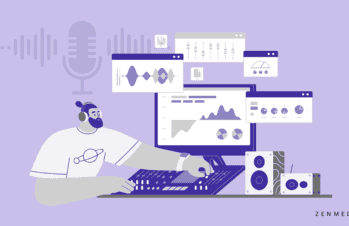Podcasting continues to cement its position as a dominant media format in 2025, with listener numbers climbing and advertising revenue following suit. But behind these promising figures is a challenge: the podcast landscape has never been more crowded.
There are currently an estimated 4.5 million podcasts competing for our attention, so having great content is just the starting point. Success demands a strategic, multi-channel marketing approach that cuts through the noise and builds a loyal audience.
Whether you need help adding relevant keywords to episode titles or recording podcast trailers and video clips to share on social media channels, we’ll show you how to market a podcast to reach your target audience and stand out against competitors.
The Podcast Revolution: Why Marketing Matters
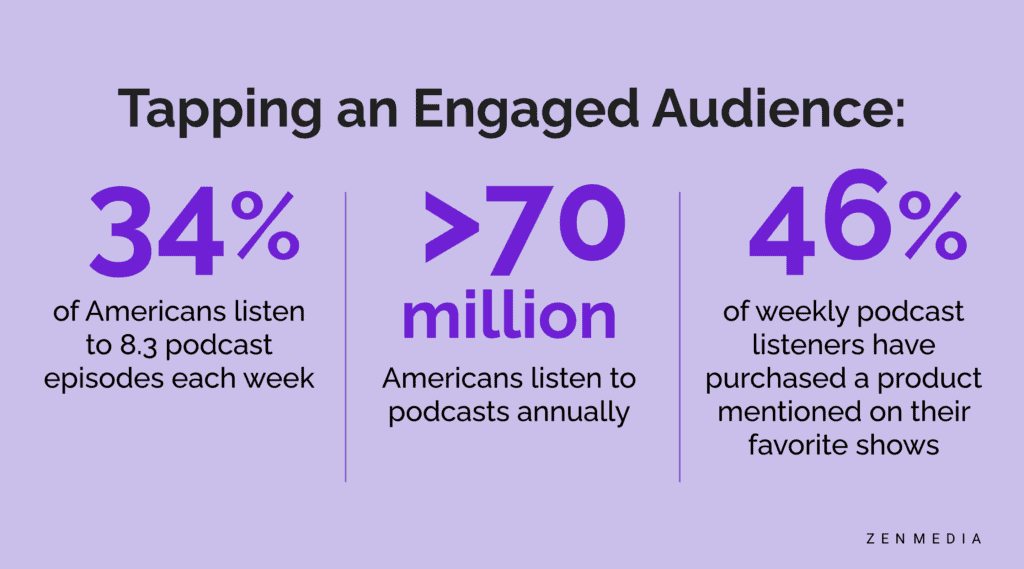
The podcast space has transformed from a niche medium into a mainstream powerhouse. More than 70 million of Americans listen to podcasts annually, a number expected to surpass 110 million listeners by 2029. This growth has attracted creators from every sector—corporate brands, independent thought leaders, and media companies—all vying for a coveted spot on our podcast feeds.
What makes podcast marketing particularly powerful is the engagement-to-conversion opportunity. Podcast listeners represent some of the most engaged audience members across any medium, with 34% of Americans listening to around 8.3 podcast episodes each week. This deep engagement translates to trust, with an impressive 46% of weekly podcast listeners reporting they’ve purchased a product mentioned on their favorite shows.
The secret to success? Quality content! But in 2025’s saturated market, listeners require more than a “publish and pray” strategy from creators. Without strategic promotion, even exceptional shows risk languishing in obscurity while competitors with marketing savvy capture the growing audience share.
Building Your Podcast’s Digital Footprint
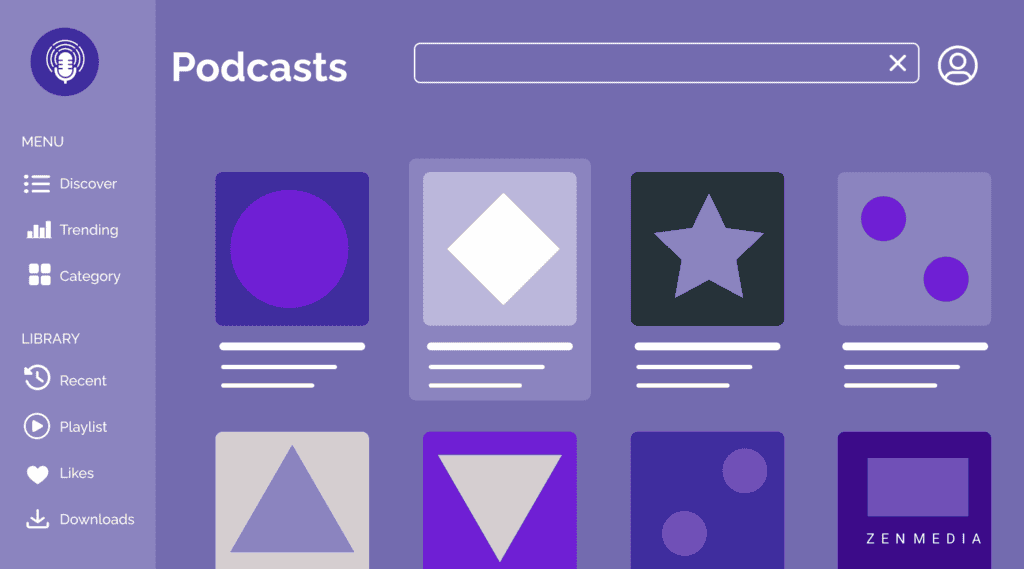
Your podcast’s discoverability hinges on optimizing your presence across distribution platforms and search environments. Each touchpoint represents an opportunity to attract new listeners.
Here are the podcast promotion strategies you need in your arsenal:
Platform Optimization Strategies for Maximum Discoverability
Every major podcast platform uses different algorithms and features to surface content to potential listeners. Apple Podcasts prioritizes factors like subscriber velocity, number of plays, and download rates, while Spotify prefers consistency and content-based filtering to push episodes to a broader audience. This means tailoring your approach to each platform’s nuances can dramatically increase your visibility.
Start with these essentials across all platforms to help listeners discover your show:
- Create a compelling, keyword-rich show title that balances searchability with brand identity
- Craft detailed episode titles and descriptions that incorporate relevant search terms
- Select precise category classifications that align with your content
- Design professional cover art that stands out at thumbnail size
- Maintain a consistent publishing schedule to signal reliability to algorithms
Leveraging SEO for Podcast Growth
Podcast search engine optimization (SEO) strategies have evolved dramatically in 2025.
For example, Google now indexes podcast audio content using advanced speech recognition, making your spoken keywords nearly as important as your written metadata.
To maximize podcast SEO optimization:
Conduct keyword research specific to audio search patterns, which differ from traditional text searches. Platforms like Ausha offer podcast-specific keyword insights based on how listeners search for audio content.
Include keywords everywhere! This means adding them to your episode titles, descriptions, and show notes. You can even create a video podcast and upload it to YouTube. Just be sure to transfer all of your written keywords over to the platform.
Take it a few steps further and create companion blog posts for each episode with detailed show notes, transcriptions, backlinks, and additional resources. Creating a dedicated landing page for each podcast episode will also help search engines categorize your content accurately.
When combined, these text-based assets make your audio content discoverable through traditional search engines, essentially doubling your discovery footprint.
Related reading: Understanding the Differences between REO and SEO
Creating a Dedicated Website Hub for Your Audio Content
While distribution platforms bring discovery advantages, owning your digital home base remains essential for podcast growth. Your podcast website serves as the central hub where you control the listener experience and capture valuable first-party data.
The most effective podcast websites in 2025 feature:
- Mobile-optimized audio players with speed control and chapter markers
- Full searchable transcripts to improve accessibility and SEO
- Email capture mechanisms tied to exclusive content offers
- Detailed show notes with timestamps and resource links
- Clear subscription calls-to-action for all major listening platforms
Invest in website infrastructure that supports podcast-specific structured data markup. This technical SEO enhancement helps search engines understand your audio content better, potentially unlocking rich results like episode carousels in search listings.
Social Media Amplification Strategies
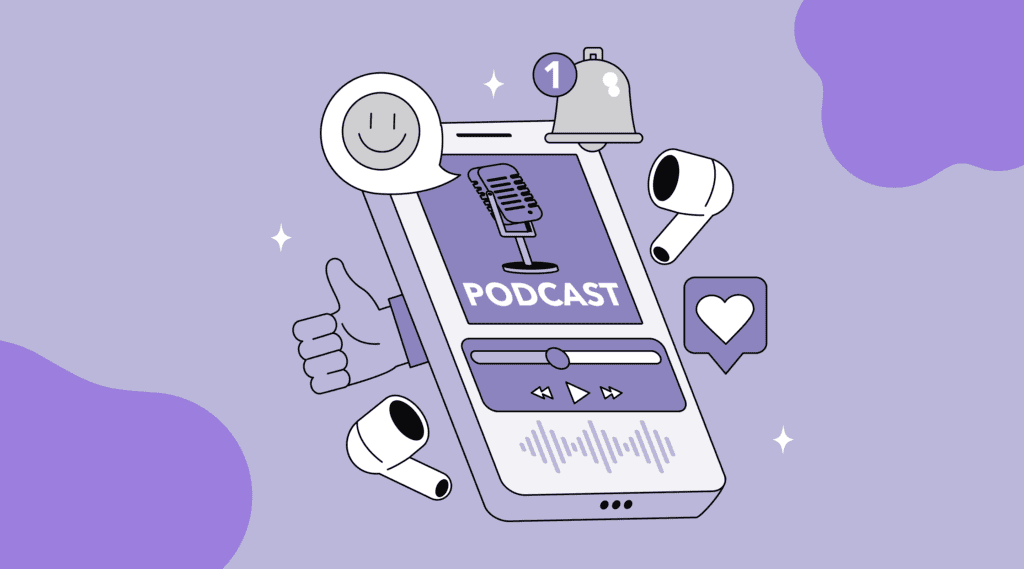
Although more than half of podcast listeners discover new shows by word of mouth recommendations, social media platforms remain crucial for podcast discovery. Spotify’s own study revealed 42% of listeners discover new podcasts on social channels. While this number is high, successful promotion requires platform-specific approaches rather than generic cross-posting.
Related reading: B2B Social Media Marketing Strategies, a Curated Guide
Platform-Specific Promotion Techniques for Audio Content
Each social platform demands unique content formats to effectively promote audio content.
Here’s how to use each social media platform to promote your podcast and find the right audience:
As the top platform for business, LinkedIn excels with B2Bs and professional-focused podcasts. The platform’s algorithm favors thought leadership content, making it ideal for sharing industry insights from your episodes. Create audiograms with strong soundbites or carousel posts highlighting key takeaways and statistics from your conversations, and leverage LinkedIn’s native newsletter feature to distribute episode summaries to your professional network.
Not just for filtered photos of food, Instagram works best with highly visual content that translates your audio value. Create quote cards featuring compelling statements from guests, or develop thematic graphics that illustrate key concepts from your episodes. Instagram Stories can feature behind-the-scenes content, while Reels provide an opportunity to share short video clips that capture interest.
TikTok
No matter your industry, TikTok has emerged as a surprisingly powerful podcast discovery platform, with 80% of Gen Z podcast listeners finding new shows through the app (closely following YouTube!). Success on TikTok requires creating native, authentic content that doesn’t feel promotional. Focus on sharing the most surprising, controversial, or emotionally resonant moments from your episodes on this platform.
X
X (formerly Twitter) remains valuable for real-time conversation around your content. Live-tweet interesting points during recording sessions, create threads unpacking episode themes, and actively engage with listeners’ questions and comments to build your community.
Video Snippet Creation for Multi-Channel Engagement
Video has become non-negotiable for podcast promotion. Even audio-only shows must develop a video strategy to remain competitive in 2025’s attention economy.
YouTube is the top platform for listeners to discover new podcasts, meaning video snippets are essential marketing assets.
When creating video content from your podcast:
- Select 1-3 minute segments that deliver standalone value
- Add captions to optimize for sound-off viewing (essential as 74% of social video on Facebook is watched without sound)
- Create platform-specific aspect ratios (9:16 for Stories/Reels/TikTok, 16:9 for YouTube)
- Include visual elements like animated waveforms or simple graphics to enhance engagement
- Feature your guest prominently in the show’s cover art if they have established recognition
Building Community Through Consistent Engagement
Beyond promotional content, social platforms offer valuable opportunities to nurture a community around your podcast. Consistent engagement with your audience transforms passive listeners into active advocates.
Create listener-driven content by soliciting questions for upcoming guests, running polls about future topics, or featuring listener stories related to your show themes. This approach both generates content and strengthens audience investment.
Consider launching platform-specific listener groups, like a Facebook Group or Discord server, where your most engaged fans can connect with each other. These communities often become self-sustaining marketing engines as members naturally recommend episodes to friends and colleagues.
Leveraging the Power of Email Marketing

While social platforms provide discovery, email marketing taps into an engaged audience seeking more valuable content from your show.
Stand out from other podcasters and newsletters in listener inboxes by providing exclusive content, giveaways, and early access to shows. This makes your audience feel more connected to your content.
Converting Listeners to Subscribers Through Value-Driven Newsletters
The transition from casual listener to email subscriber marks a significant commitment milestone. Optimize this conversion by:
- Offering genuinely exclusive content (extended interviews, bonus episodes, resource guides)
- Creating logical subscription points within your listener journey (episode endings, website visit)
- Testing different lead magnets to identify what your specific audience values most
- Implementing a simple, mobile-optimized signup process (ideally requiring only email address initially)
Nurturing Your Audience Between Episodes
Your newsletter strategy should bridge the gap between episodes, maintaining audience engagement during publishing breaks. Effective podcast newsletters typically include:
- Early access to upcoming episodes or exclusive content
- Behind-the-scenes insights into your production process
- Expanded commentary on topics that couldn’t fit in the main episode
- Curated resources related to recent episode themes
- Listener spotlights and community recognition
Segment your email list based on listener behavior and preferences. Automation workflows can deliver tailored content based on which episodes a subscriber has engaged with, creating a personalized experience that significantly improves retention rates.
Related reading: Email Marketing Automation for B2B Companies
Measuring Engagement and Optimizing Outreach
Email provides unmatched analytics capabilities compared to podcast platforms themselves. Track metrics like:
- Open rates by subject line type and send time
- Click-through rates on episode links
- Content preference patterns based on engagement
- Subscriber-to-listener conversion ratios
- Unsubscribe triggers and patterns
Use these insights to continuously refine your approach. For instance, if data shows that subscriber engagement peaks with behind-the-scenes content, adjust your newsletter strategy to include more production insights and creator commentary.
Cross-Promotion and Collaboration Opportunities

In 2025’s competitive podcast landscape, strategic partnerships have become essential growth drivers. Cross-promotion and collaborations allow you to tap into established audience bases and build credibility through association.
Here’s how you can reach new audiences:
Strategic Guest Selection for Audience Expansion
Guest selection should balance content value with strategic marketing potential. When evaluating potential guests, consider:
- Audience overlap: Does the guest attract your target demographic?
- Promotional capability: Will they share the episode with their audience?
- Content expertise: Can they deliver unique insights to your listeners?
- Relationship potential: Could this lead to ongoing collaboration?
Develop a systematic outreach process for securing high-value guests. Start by creating a detailed guest brief document that outlines your audience, typical questions, and promotional expectations. This professional approach significantly increases acceptance rates from in-demand guests.
Podcast Network Advantages and Considerations
Podcast networks continue to evolve in 2025, offering both independent shows and established media brands new avenues for growth. Before joining a network, evaluate:
- Cross-promotional opportunities with complementary shows and popular podcast hosts
- Ad sales capabilities and revenue-sharing models
- Production and marketing support provided
- Exclusivity requirements and content ownership terms
Networks can accelerate growth by introducing your show to listeners of similar programs. Finding like-minded podcasters can help you tap into similar target audiences to attract more listeners.
Leveraging Appearances on Other Shows
Appearing as a guest on other podcasts remains one of the most effective marketing strategies in 2025. These appearances position you as an expert, build relationships within your industry, and introduce you to loyal listeners who already consume podcast content.
To maximize guest appearances:
- Create a one-page media kit highlighting your expertise and potential discussion topics
- Research shows thoroughly before pitching to ensure audience alignment
- Deliver exceptional value during your appearance rather than focusing on self-promotion
- Prepare platform-specific promotional assets for hosts to use when sharing your episode
Track referral traffic from guest appearances to identify which shows drive the most valuable listeners to your podcast. This data should inform future outreach priorities and relationship cultivation.
Related reading: Thought Leadership in 2025: 5 Steps to Establish Your Authority
Paid Amplification: When and How to Invest

Organic growth strategies remain powerful, but 2025’s competitive landscape often requires strategic paid amplification to achieve scale. Podcast advertising expenditures are expected to reach $4.46 billion this year, and platforms are developing increasingly sophisticated targeting options for creators.
Platform-Specific Advertising Options for Podcasters
Major platforms offer native advertising solutions tailored to podcast promotion.
Spotify Podcast Ads allow for demographic, interest, and listening behavior targeting. Their streaming ad insertion (formerly dynamic ad insertion) technology enables you to update promotional messaging without changing the episode itself, making it ideal for testing different calls-to-action.
Apple Podcasts’ promotional units appear in browse and search results, offering valuable visibility in the platform. These placements work best for shows with strong visual identity and clear value propositions that can be communicated concisely.
Google’s TrueView Ads on YouTube excel for podcasts with video components, allowing you to reach viewers based on topic interest and engagement patterns. The platform’s skip feature means you only pay when viewers watch at least 30 seconds, making it cost-effective for qualified audience building.
Social platform advertising (particularly on Facebook, Instagram, and TikTok) offers the most sophisticated targeting capabilities, allowing you to reach potential listeners based on interest affinity with your content themes.
Related reading: Paid media: Your Guide to Making it Work
Retargeting Strategies for Listener Retention
Beyond acquisition, paid channels excel at bringing occasional listeners back to your show. Implement retargeting campaigns that reach:
- Website visitors who didn’t subscribe to your podcast
- People who engaged with your social content but didn’t listen
- Past listeners who haven’t returned for recent episodes
- Email subscribers who haven’t opened recent newsletters
These retargeting efforts are typically 8x cheaper than cold acquisition campaigns, making them the logical first investment for podcasters with limited advertising budgets.
Budget Allocation and ROI Measurement
Start with a test-and-learn approach, allocating small budgets across multiple platforms to identify which delivers the strongest performance for your specific show. Track cost-per-new-listener metrics religiously, and establish baseline conversion rates from listener to subscriber.
The most sophisticated podcast marketers in 2025 are implementing attribution modeling that connects paid acquisition costs to lifetime listener value. This approach accounts for factors like:
- Average episodes consumed per listener
- Listener retention rate over time
- Conversion rate to revenue-generating activities (merchandise purchases, Patreon support, etc.)
- Word-of-mouth referral generation from acquired listeners
This comprehensive view often reveals that channels with higher initial acquisition costs actually deliver better long-term ROI due to audience quality differences.
Analytics and Growth Optimization
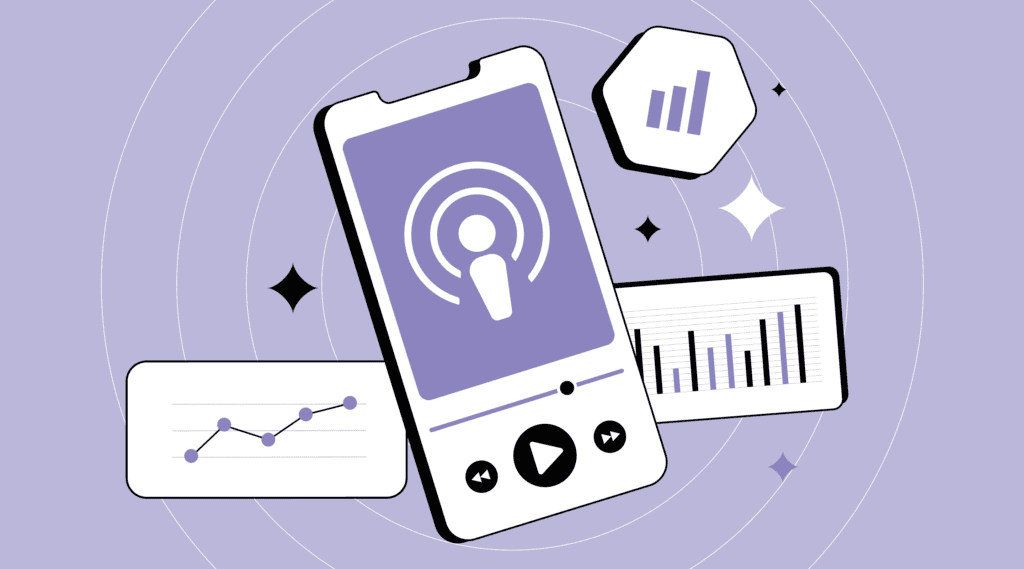
Data-driven decision-making separates thriving podcasts from stagnant ones.
While podcast analytics have historically lagged behind other digital media, 2025 offers podcasters unprecedented insight into audience behavior.
Key Metrics Every Podcaster Should Track
Focus your analytics attention on these essential metrics:
- Consumption patterns: Average completion rate, skip patterns, and listening velocity
- Audience demographics: Age, location, device usage, and listening context
- Growth indicators: Subscriber conversion rate, episode-to-episode retention, and share of voice
- Engagement signals: Rating/review frequency, social sharing, and website interaction
- Monetization metrics: Revenue per thousand listens (RPM), sponsor conversion rates, and patron acquisition cost
Establish benchmark performance expectations for your specific podcast category. Different genres have vastly different performance standards—a 45-minute business interview achieving 65% completion might indicate strong engagement, while the same rate for a 15-minute news recap would signal potential content issues.
Tools for Audience Analysis and Content Optimization
The podcast analytics ecosystem has matured significantly, offering creators sophisticated tools beyond basic platform-provided statistics:
- Podscribe provides cross-platform attribution tracking, connecting promotional efforts to listener acquisition
- ContentShake AI (Semrush) offers AI-powered content analysis, identifying the topics, guests, and segments that drive highest engagement
- Magellan AI delivers competitive intelligence on similar shows, including growth rates and audience overlap
These specialized tools complement the analytics dashboards provided by major hosting platforms, giving you both operational metrics and strategic insights.
Using Data to Drive Content and Marketing Decisions
Transform analytics from passive reporting to active strategy driver by implementing a systematic review process:
- Conduct monthly performance reviews comparing recent episodes to historical benchmarks
- Identify patterns in high-performing content and consciously incorporate those elements in future episodes
- A/B test promotional messaging across platforms to optimize conversion
- Adjust publishing cadence and timing based on consumption patterns
- Refine guest selection criteria using engagement data from previous interviews
This data-informed approach allows you to evolve your content strategy while maintaining your core value proposition, ensuring you grow without alienating your existing audience.
From Listeners to Brand Advocates
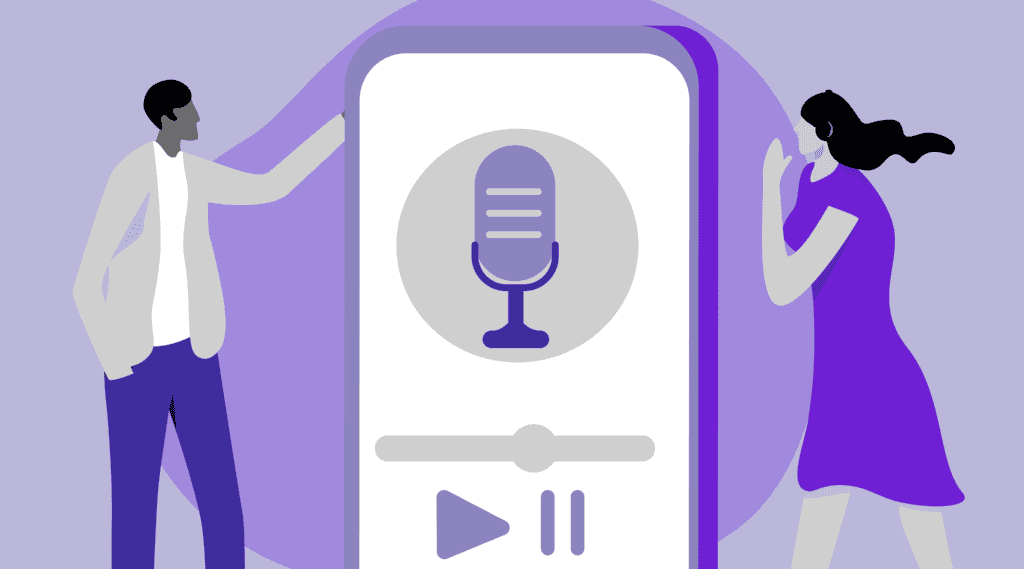
The ultimate podcast marketing achievement transforms passive listeners into active advocates who amplify your reach organically. This transition from audience to community represents the most sustainable growth engine for podcasts in 2025.
Creating a Loyalty Strategy for Super-Fans
Identify and nurture your most engaged listeners with special recognition and exclusive opportunities:
- Create a named community identity that listeners can adopt (bonus points if you incorporate your podcast’s title)
- Develop recognition systems that acknowledge consistent engagement and contribution
- Offer escalating tiers of exclusivity and access based on participation level
- Facilitate direct connections between community members who share interests
The most successful podcasters in 2025 are treating their super-fans as partners rather than just audience members. This collaborative approach often leads to listener-generated content, community-led events, and organic promotional activities that no marketing budget could replicate.
Leveraging Listener Testimonials and Reviews
Social proof remains among the most powerful conversion factors for potential new listeners. Actively cultivate positive reviews and testimonials by:
- Creating specific calls-to-action requesting reviews at optimal moments in the listener journey
- Featuring listener feedback prominently across your digital properties
- Developing easy sharing mechanisms for listeners to recommend episodes
- Acknowledging and thanking reviewers publicly
The psychological impact of seeing authentic enthusiasm from existing listeners cannot be overstated. Invest time here for maximum returns.
Building a Sustainable Word-of-Mouth Engine
As we mentioned above, word-of-mouth remains the gold standard for podcast discovery. Systematically encourage this behavior by:
- Creating “shareable moments” within episodes—surprising statistics, controversial opinions, or memorable stories
- Developing episode-specific assets designed for easy sharing on different platforms
- Explicitly asking satisfied listeners to recommend specific episodes to friends who would benefit
- Tracking referral source data to identify which episodes generate the most organic sharing
The most powerful growth strategy remains creating content so valuable that listeners feel compelled to share it. When marketing and content quality work in tandem, sustainable audience growth becomes not just possible but inevitable.
Put Your Podcast Marketing Strategy to the Test
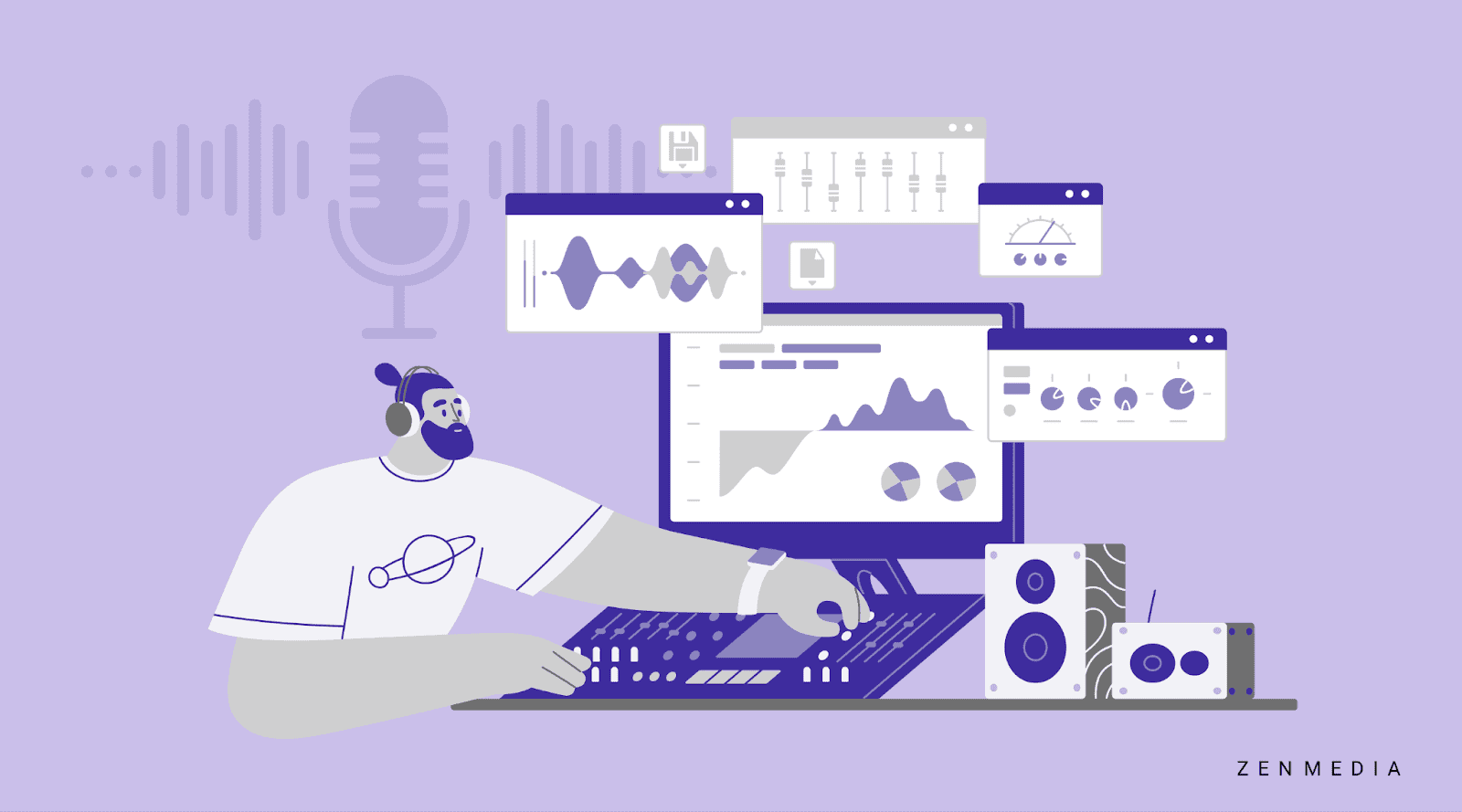
Building a successful podcast in 2025 requires balancing artistic creation with strategic marketing. By implementing these multi-channel promotion strategies while maintaining unwavering content quality, you can cut through the crowded podcast landscape and build a loyal, engaged audience that grows organically.
Remember that podcast marketing is a marathon, not a sprint. Consistency across your content creation, promotion efforts, and audience engagement will yield compounding returns over time. Start with the strategies most aligned with your current resources and audience, then expand your approach as your show gains traction.Looking for more expert guidance on your podcast marketing strategy? Our team can help you develop and implement a customized audience growth plan tailored to your unique content and goals. Let’s talk about transforming your podcast from hidden gem to industry staple.


